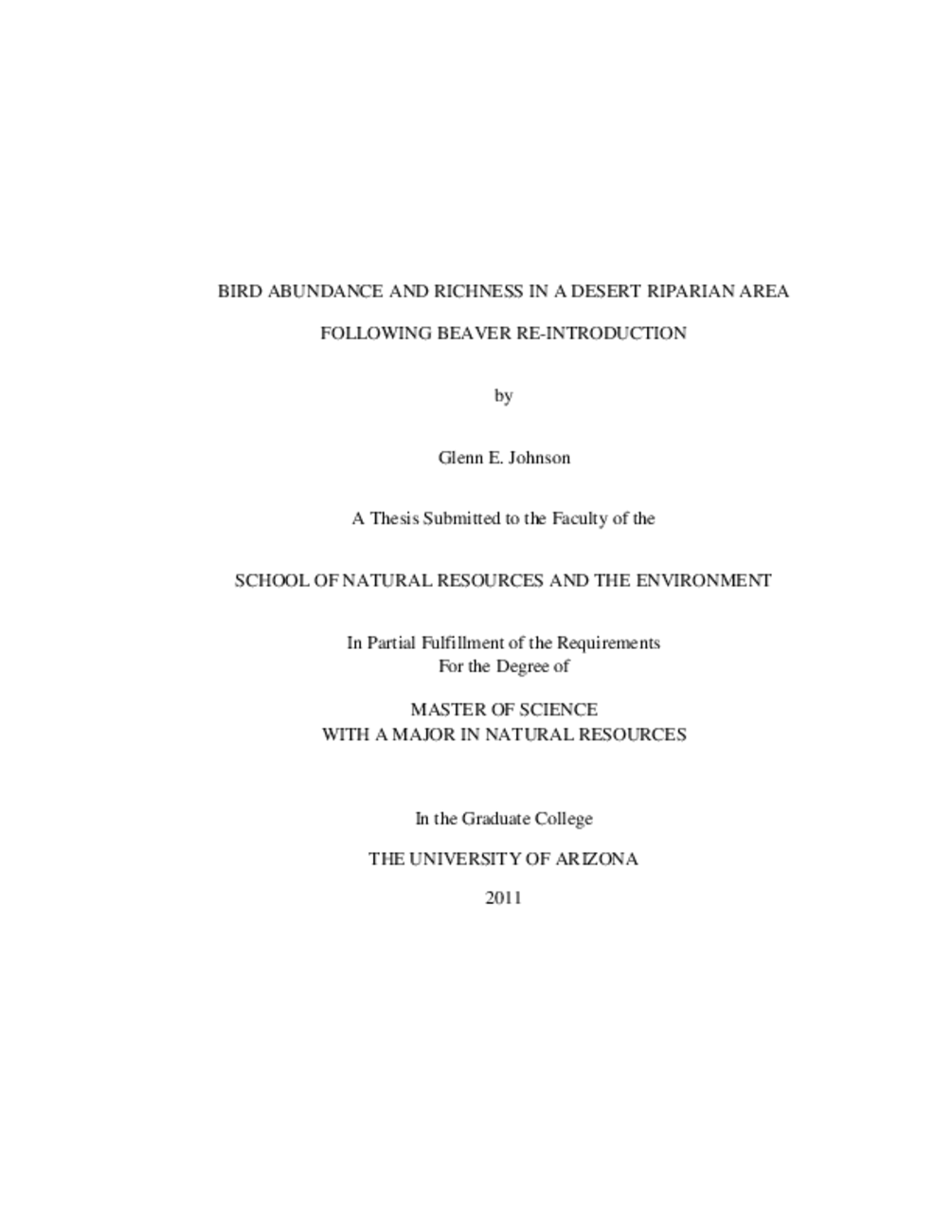Bird Abundance and Richness in a Desert Riparian Area Following Beaver Re-introduction
I measured bird abundance and richness along the upper San Pedro River in 2005 and 2006 to investigate how beavers (Castor canadensis) may act as ecosystem engineers after reintroduction to a southwestern U.S. desert riparian area. In areas where beavers colonized, I found higher bird abundance and richness of bird groups such as all breeding birds, insectivorous birds, and riparian specialists, and higher relative abundance of many individual species—including several avian species of conservation concern. After accounting for environmental factors such as presence or persistence of surface water, and extent of Frémont cottonwood (Populus fremontii) and Goodding willow (Salix gooddingii), the relative influence of beaver activity was not as strong as these other environmental factors. However, there was still evidence of an association between beaver activity and bird abundance and richness, as models that included beaver-related variables better explained variation in bird abundance and richness for 71% of species groups 46% of individual species we built models for. Though the effect sizes associated with the beaver influence on the bird community were smaller than similar studies conducted in other regions, the biological significance of beaver activity within the upper San Pedro River riparian area will likely become even stronger with increasing time since the reintroduction.

